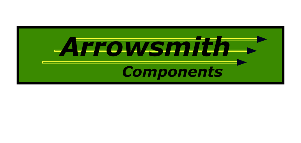

 Triple
ACE
X10
Triple
ACE
X10
Why short bullet heads?
The short bullet point head (10 mm in length) minimises the potential for the head to bend on the very small diameter shank inside the arrow. This is a common, but not easily seen problem with many current point designs with point head lengths of 20 mm upwards. The problem can be seen by rolling the arrow on a flat surface such as table with the arrow point hanging over the table edge. The arrow point will wobble if it has bent on the shank, and the arrow will no longer fly consistently straight.
Why two piece bonded points?
Our point designs carry most of their weight in the shank, so we end up with longer shanks. Due to this extra length keeping the entire point straight during machining is marginal, so hence a separate bullet and shank to ensure better machining consistency.
Do you make break off points?
We chose not to use break off designs as we do not believe we can consistently keep the points straight, with the long shanks of our designs. Breaking sections off does not ensure weight match over a set of arrows. We machine to length for better, more consistent weight control.
What is the advantage of using tungsten shanks?
Tungsten is a very dense material. It allows us to produce much shorter shanks for the same weight . Containing extra weight in the shank of larger diameter arrows in stainless steel does not greatly increase the length of the shank. For small diameter arrows such as the X10 stainless steel is not dense enough to produce a short enough shank for the heavier weights required.
What is the difference between your X10 tungsten points and Easton stainless points?
The bullet point is shorter and the weight is carried in the shank, as shown in the comparison picture to the left.
Do you make tungsten points for ACE’s?
We do not make a tungsten point for the ACE. Tungsten is a very dense material that we use to achieve a weight in a small volume. As the ACE arrow has a relatively large internal diameter the required design weights can be achieved with acceptable shank lengths in stainless steel.
Q & A

